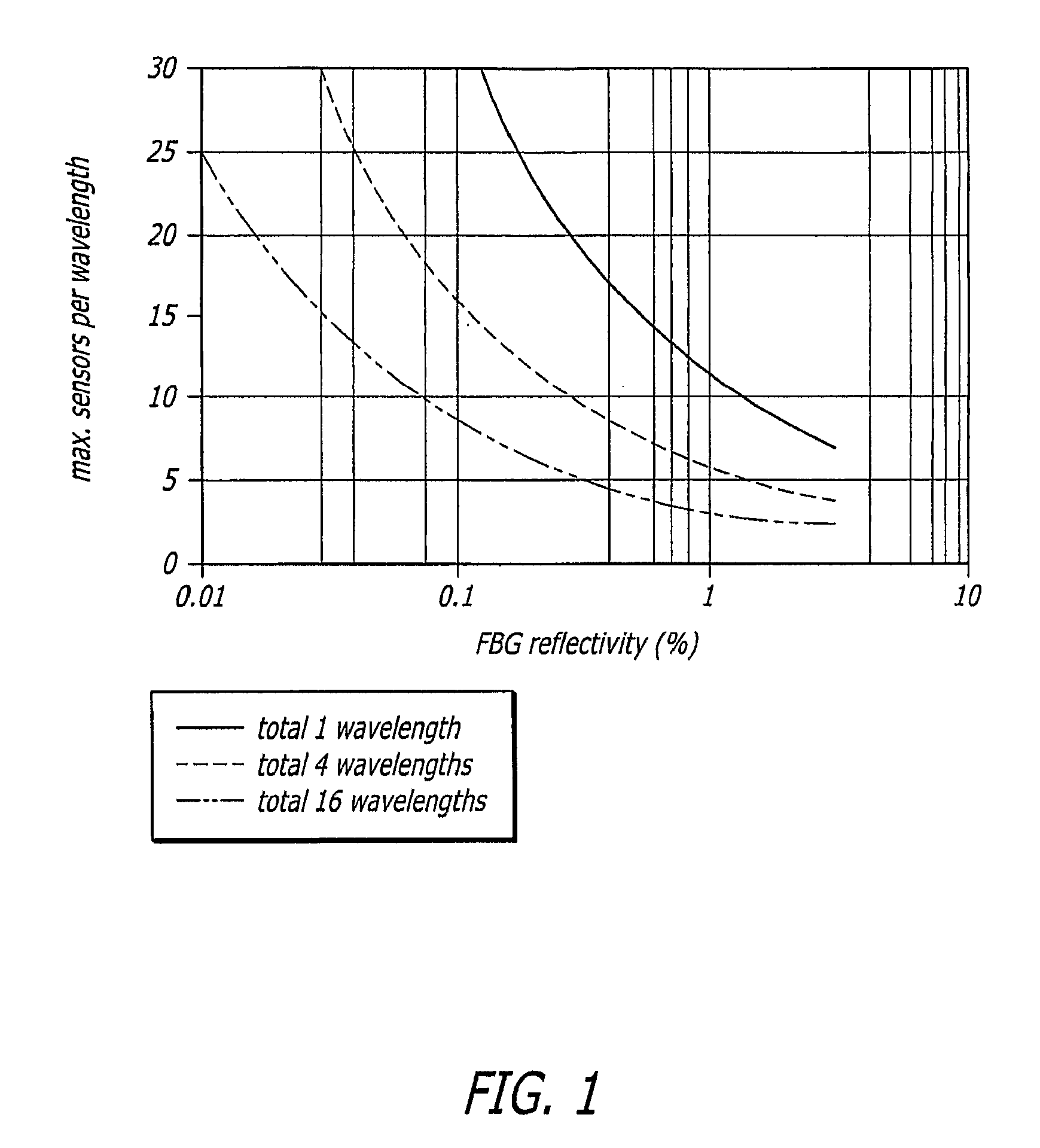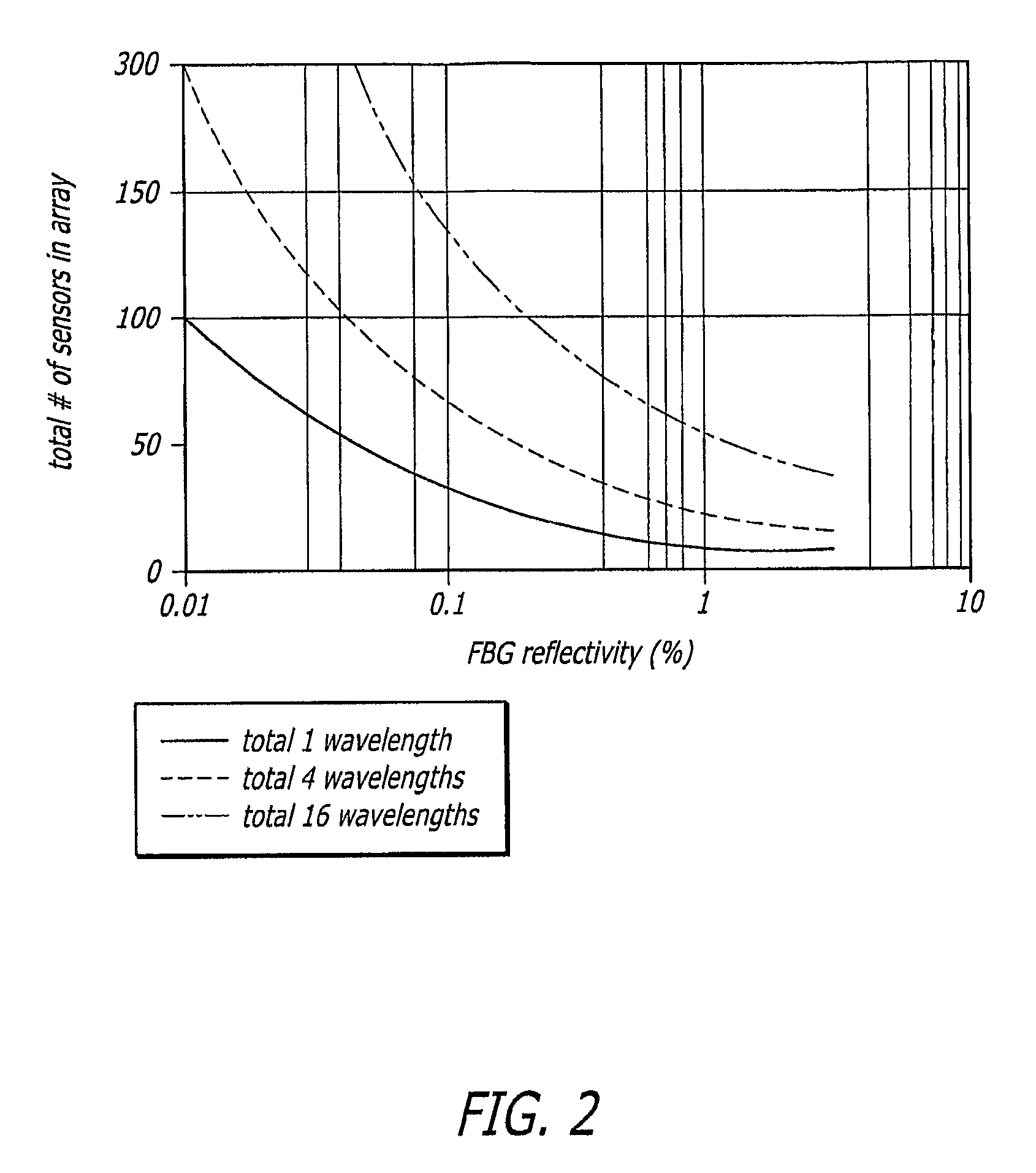High density fiber optic acoustic array
a high-density fiber optic and acoustic array technology, applied in the field of high-density fiber optic acoustic arrays, can solve the problems of fbgs having to be specially packaged to limit their spectral sensitivity to changes in ambient temperature and pressure, sensor manufacturing is typically labor-intensive, etc., and achieves the effect of simplifying the hybrid wdm-tdm architecture of the sensor array and reducing costs
- Summary
- Abstract
- Description
- Claims
- Application Information
AI Technical Summary
Benefits of technology
Problems solved by technology
Method used
Image
Examples
Embodiment Construction
[0026]Referring now to the drawings in detail, in which like reference numerals indicate like or corresponding elements among the several figures, in a presently preferred embodiment, an optical fiber that is intended for use in an acoustic array is coated with a plastic material that is foamed to enhance the acoustic sensitivity of the fiber using an extrusion process which allows very long lengths of fibers, on the order of kilometers, to be coated in a rapid, low cost process. This process, however, results in an optical sensor array that has unsuitable sensitivity to changes in pressure, temperature or bending, that is stressing, of the fiber.
[0027]Simply removing all of the coating in the vicinity of the FBGs forming the sensor array incorporated into the optical fiber reduces the magnitude of the aforementioned sensitivities, but presents several problems. First, the thick plastic material that is typically used to coat the optical fiber is difficult to remove from the optical...
PUM
| Property | Measurement | Unit |
|---|---|---|
| reflectivity | aaaaa | aaaaa |
| wavelengths | aaaaa | aaaaa |
| temperature | aaaaa | aaaaa |
Abstract
Description
Claims
Application Information
 Login to View More
Login to View More - R&D
- Intellectual Property
- Life Sciences
- Materials
- Tech Scout
- Unparalleled Data Quality
- Higher Quality Content
- 60% Fewer Hallucinations
Browse by: Latest US Patents, China's latest patents, Technical Efficacy Thesaurus, Application Domain, Technology Topic, Popular Technical Reports.
© 2025 PatSnap. All rights reserved.Legal|Privacy policy|Modern Slavery Act Transparency Statement|Sitemap|About US| Contact US: help@patsnap.com



